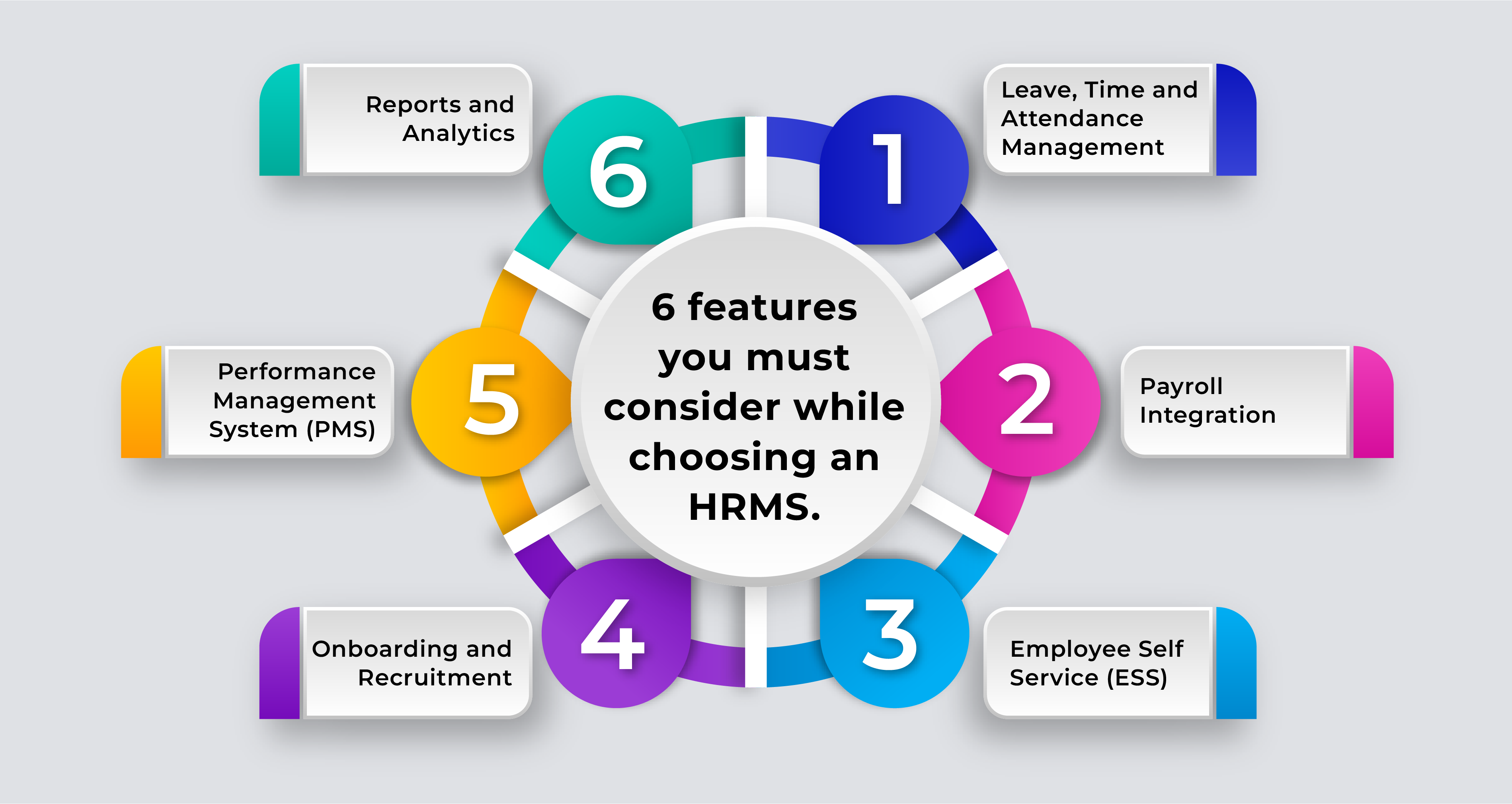Confused about the qualities a human resource management system should have?
To learn about the key characteristics that are essential for any firm, keep reading.
Each organisation has a unique structure, needs, and management procedures. These HR Processes are intended to be facilitated and made more effective by an HRMS. Let’s use jeans as an example. Yes, denim is fantastic on its own, but a pair of well-fitting jeans will make your entire ensemble look better. Your organisation’s effectiveness will increase with a carefully chosen HRMS. We hope that this blog will help you understand the key components of an HRM system so you can find one that is “Tailored Fit” for your business. So, let’s begin right away!
 1) Leave, Time and Attendance Management
1) Leave, Time and Attendance Management
One of the key components of an HRMS is time and attendance management. It automates the time-consuming process of recording each employee’s attendance. Tracking their leaves and performing other related duties. Classifying leaves as paid/unpaid or informed/uninformed, etc. is also quick and easy with an HRMS. Additionally, HR software assists with leave computation, classification based on predefined type.
2) Payroll Integration
Another key responsibility of an HR that is automated by HRMS is salary processing. Besides processing employee wages for a specified period of time, an HRMS integrates time and attendance. It automatically determines the amount to be processed. Also, HRMS allows users to view salary breakdown and arrears computations. By maintaining transparency, the employee gains trust and fosters a positive work environment.
3) Employee Self Service (ESS)
Employee Self Service (ESS) is a major module of HRMS. ESS enables the employee to view and change their personal and professional information. And that too without concerning the HR. Making changes in the employee master requires approval of the HR though. This also saves time as the employees no longer need to consult the HR to make such changes. This time can be utilised for better workforce management.
4) Onboarding and Recruitment
Examining and organising resumes, contacting applicants, tracking interviews, onboarding, training, and training evaluation. These are a few of the steps that must be taken when hiring a new employee. All these procedures are automated by an HRMS, leaving HR with only the task of conducting interviews. As the interview process progresses, hours’ worth of tasks are completed. Both the employee and the manager can track an employee’s development and training with HRMS.
5) Performance Management System (PMS)
It’s important to be aware of how well your employees are doing. You can track employee performance with PMS. This gives you the ability to reward exceptional performers. And encourage underachievers to improve. Employees can set their own targets and check their performance history to make comparisons. They may always be one step ahead of where they were yesterday thanks to this.
 6) Reports and Analytics
6) Reports and Analytics
HRMS offers you comprehensive reporting and analytics with graphics for easier visual comprehension. Reports and analytics are essential for a business to measure growth at individual and organisational levels.. Along with mandatory reports, an HR management system generates many other vital reports. While offering analytics that are essential for tracking performance. The reports offered can be used as a point of reference for comparisons.
To sum up, having an HR Software is a great advantage to an organisation. But you need to know what to look for in a product. The different features that HRMS offers is what makes it such a significant switch. And now that you know what features to look for in an HR Management System, you can check out why HRMS is becoming a need and how you can get started here.
Spine HR Suite not only offers you these 6 essential features but 19 different modules to pick and choose from, for that “tailored fit”!

